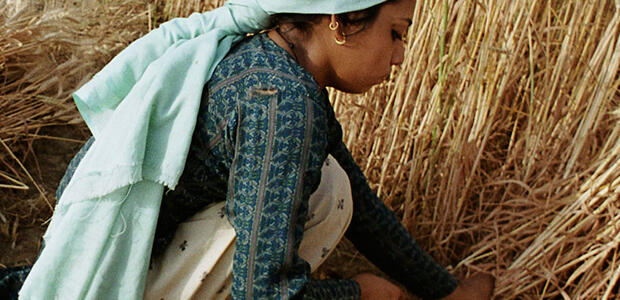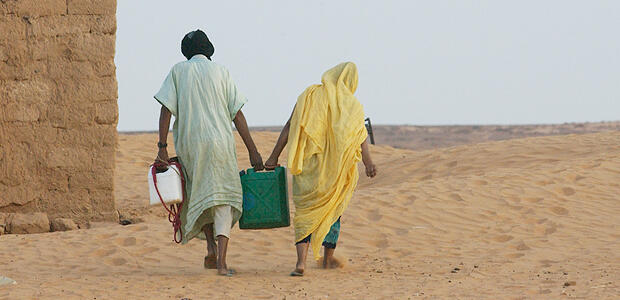Working Paper
Social protection for working-age women in Tanzania
Tanzania has expanded its social protection framework significantly over the past decade, but the country continues to grapple with important gender inequalities. This paper examines, first, the evolution and effects of Tanzania’s social protection...
Blog
A fiercely contested omission — or why we need to keep talking about unpaid care

by
Naila Kabeer
March 2022
In the late 1950s, the United Nations System of National Accounts was set up to promote the collection of internationally comparable data on...
Blog
The COVID-19 crisis, informal workers, and gender — understanding the intersections

by
Martha Chen
March 2022
The COVID-19 crisis — the pandemic, restrictions, and recession — has not been a grand leveler. While all of us, rich and poor, faced the fear and...
Blog
Does access to microfinance help or hinder women’s empowerment?
by
Niaz Asadullah, Nudrat Faria Shreya, Zaki Wahhaj
March 2022
Almost everywhere, women are underrepresented in labour markets compared to men. While labour force participation among women of working age (FLFP)...
Working Paper
A macro–micro analysis of gender segregation and job quality in Latin America
Latin America has seen vast improvements in gender educational and health equality. Favourable supply-side conditions, however, have not translated into greater gender economic equality, a process that also depends on structural economic change and...
Policy Brief
Six sets of policy actions to promote social mobility
Promoting social mobility is an essential task of development, and a multi-faceted one. Precarious livelihoods are widespread. Containing downward mobility is an important precondition for sustaining upward mobility. Policies of human capital...
Blog
A summer reading list of our latest papers, articles, and books
At the UNU-WIDER offices here in Helsinki, Finland, the summer holidays are almost upon us. Looking at the list of new UNU-WIDER publications, it is...
Blog
Storify - Aid for Gender Equality

by
UNU-WIDER
January 2014
The story of the event as told by Twitter. [<a href="//storify.com/UNUWIDER/aid-for-gender-equality-16-december-copenhagen-den" target="_blank">View...
Blog
Tackling gender inequality from all directions

by
Katrina Jurva
March 2017
Improving the position of women continues to be an important concern in development. As we strive to make better living standards possible for people...
Working Paper
The role of gender in the extractives industries
In recognizing that women’s participation and gender equity is a precondition for the achievement of acceptable development outcomes, extractives industry companies are increasingly making public commitments to integrating gender equality, inclusion...
Book
Growth, Structural Transformation, and Rural Change in Viet Nam (in Vietnamese)
Giới thiệu Việt Nam là một nước đông dân ở khu vực Đông Nam Á với lịch sử lâu đời và đặc trưng về kinh tế, chính trị và xã hội.2 Sau khi kết thúc chiến tranh với Hoa Kỳ năm 1975, Việt Nam đã có những tham vọng lớn về tương lai; song mặc dù có nhiều...
Blog
Gender pay gaps on the rise in South Africa
by
Michelle Pleace, Matthew Clance, Nicky Nicholls
January 2024
New analysis of income data in South Africa shows the gender pay gap—how much more men earn than women—has increased. According to findings from a...
Project meeting
Gender equality theme meeting
This planning meeting is for the project team members, and is by personal invitation only. For more information on this research, please see the research page
Thu, 12 July 2012
–
Fri, 13 July 2012
Helsinki,
Finland
Past event
Lecture
Trade and gender inequality
Invited Guest Lecturer, Malokele Nanivazo, Research Fellow at UNU-WIDER. Contact Person: Henna Seinälä, University of Jyväskylä
Mon, 26 November 2012
University of Jyväskylä,
Jyväskylä,
Finland
Past event
Project meeting
 Kick-off meeting – Gender and Development project
Kick-off meeting – Gender and Development project
Wed, 6 May 2015
–
Thu, 7 May 2015
UNU-WIDER,
Katajanokanlaituri 6 b,
Helsinki,
Finland
Past event
Blog
Celebrating gender diversity and leading with impact

by
Mamiky Leolo
August 2023
In celebration of South Africa's Women's Month, SA-TIED is spotlighting the women driving change within the field of economics. Through the ‘Breaking...
Blog
Georgina Ryan – paving the path in economic policy and inclusivity

by
Georgina Ryan
August 2023
As part of the SA-TIED ‘Breaking Barriers, Building Economies: Women in Economic Policy' initiative, Georgina Ryan emerges as a visionary force...
Blog
Driving change: Nadine Riedel on economics and gender equality
In celebration of South Africa's Women's Month, SA-TIED is spotlighting exceptional women with the 'Breaking Barriers, Building Economies: Women in...
Blog
Contributing to gender inclusivity: A glimpse into Pumla Bam's journey

by
Pumla Bam
August 2023
In celebration of South Africa's Women's Month, SA-TIED is spotlighting women driving change in economics. Through the 'Breaking Barriers, Building...
Book
Growth, Structural Transformation, and Rural Change in Viet Nam
This is an open access title available under the terms of a CC BY-NC-SA 3.0 IGO licence. It is free to read at Oxford Scholarship Online and offered as a free PDF download from OUP and selected open access locations. The household survey data used in...
Project workshop
 Women's work – Routes to social and economic empowerment
Women's work – Routes to social and economic empowerment
Thu, 19 November 2020
–
Thu, 3 December 2020
Virtual,
Helsinki,
Finland
Past event
Presentation
Panel on the ‘Structure and drivers of the quantity and quality of women’s work in Latin America’ at the 29th Annual International Association for Feminist Economics
The UNU-WIDER project on ‘Women’s work — routes to economic and social empowerment’ presents at the 29th IAFFE Annual Conference, held virtually between 22 – 25 June 2021.
Fri, 25 June 2021
Online,
Finland
Past event
Seminar
Kunal Sen at WEDGE/EMERGE "Interrogating Gender" Seminar
Kunal Sen speaks at the WEDGE and EMERGE programme's first web-based discussion on gender equality and data. The discussion explores what we measure in labor force surveys, what we do not count, and how decisions regarding measurement shape policy...
Fri, 22 January 2021
Online,
United States
Past event
In the media
Research Fellow Smriti Sharma’s article on gender equality in India picked up
An article on gender equality in India written by UNU-WIDER’s Smriti Sharma is getting international attention. The piece, originally published in The Conversation, has been picked up by the US edition of The Huffington Post — pointing to global...
Project
Gender and development
Theme: Inclusion
Substantial progress toward gender equality and women’s empowerment has occurred over the past four decades, but key gaps, both in opportunity and capability, persist between males and females in all countries. This project focuses on generating high...
Project
 Gender equality
Gender equality
Theme: 2010-11
Policy Brief
How to create decent work for women
Despite advancements for gender equality in some spheres, labour market outcomes for women continue to be worse than for men. Gender gaps in pay, labour force participation rates, and measures of job quality are stubbornly persistent and continue to...

 Join the network
Join the network



















